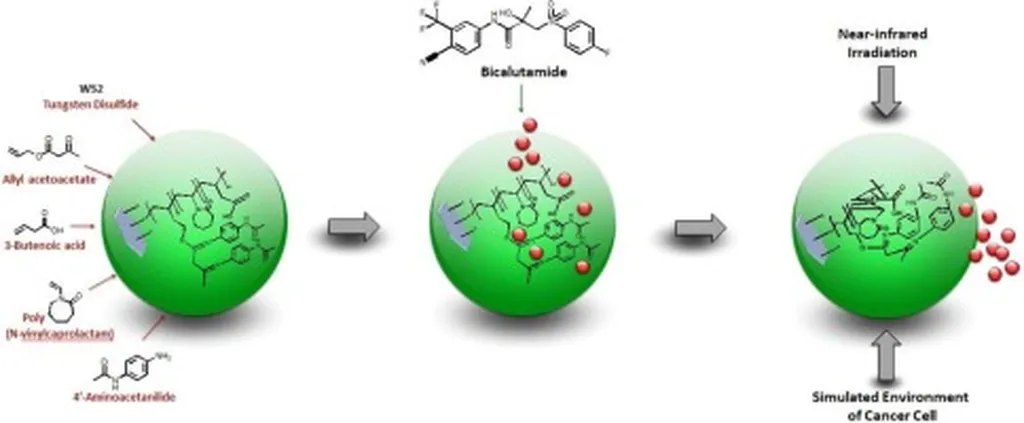In the heart of Tehran, a team of researchers led by Mehran Khodayari from the University of Tehran and the Institute for Research in Fundamental Sciences (IPM) has made a significant stride in the field of cancer therapy. Their work, published in the journal *Materials Today Advances* (which translates to *Advances in Materials Today*), introduces a novel approach to targeted drug delivery and combination therapy, leveraging the unique properties of two-dimensional materials.
Khodayari and his team have developed a multifunctional drug delivery platform based on oxygen plasma-treated tungsten disulfide (WS2) nanosheets. These nanosheets are functionalized with folic acid-conjugated polyethylene glycol (PEG-FA), creating a system that not only delivers drugs to cancer cells with high precision but also enhances the therapeutic efficacy through a combination of photothermal therapy and electroporation.
The key innovation lies in the oxygen plasma treatment of the WS2 nanosheets. This process introduces defect states and increases the negative surface charge, allowing for an exceptionally high drug loading capacity of approximately 316% by weight. “This is a significant improvement over previous transition metal dichalcogenide (TMDC) nanocarriers,” Khodayari explains. “The increased drug loading capacity means we can deliver more chemotherapy drugs directly to the cancer cells, enhancing the treatment’s effectiveness.”
The nanosheets exhibit excellent stability and strong photothermal conversion under near-infrared (NIR) laser exposure. This means that when exposed to NIR light, the nanosheets generate heat, which can be used to trigger drug release and kill cancer cells. Additionally, the folate functionalization ensures that the nanosheets are specifically taken up by cancer cells, which often overexpress folate receptors.
But the team didn’t stop there. They also incorporated electroporation, a technique that uses pulsed electric fields to transiently permeabilize cell membranes, further enhancing intracellular drug delivery. “By combining photothermal therapy, electroporation, and targeted drug delivery, we’ve created a multi-modal therapy that is more effective than any single treatment alone,” Khodayari says.
The results are promising. In vitro studies showed that the combination therapy using [WS2]OPT-PEG-FA/DOX with NIR photothermal treatment and electroporation resulted in markedly enhanced cancer cell killing compared to individual treatments. Moreover, the treatment spared normal cells, indicating a high degree of selectivity.
This research has significant implications for the future of cancer therapy. The use of 2D materials like WS2 nanosheets opens up new possibilities for targeted drug delivery and combination therapy. As Khodayari notes, “This work demonstrates the potential of oxygen plasma surface engineering in achieving superior drug loading, ROS-mediated stress, and therapeutic efficacy.”
The commercial impacts of this research are also noteworthy. The energy sector, in particular, could benefit from the development of more efficient and targeted drug delivery systems. As the demand for personalized medicine continues to grow, technologies like this could play a crucial role in improving patient outcomes and reducing healthcare costs.
In conclusion, Khodayari’s work represents a significant advancement in the field of cancer therapy. By leveraging the unique properties of 2D materials and combining multiple therapeutic approaches, his team has developed a platform that could revolutionize the way we treat cancer. As the research continues to evolve, we can expect to see even more innovative applications of these technologies in the years to come.

